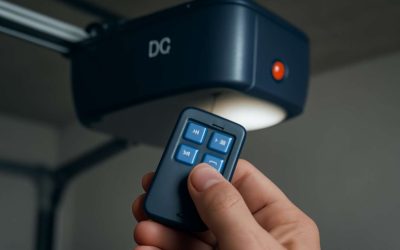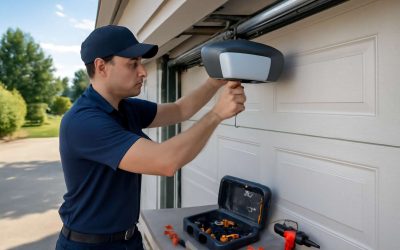
A garage motor is the heart of your home’s garage door, supplying the power needed to raise and lower the heavy steel or wood panels that form your garage. The motor is typically powered by household AC current, and many use an inverter to convert the power to DC, which allows smaller, more efficient motors to run and charges a battery backup system that kicks in during a power outage. Many models also include adaptable features and accessories that enhance safety, convenience, and security.
Whether you’re shopping for an opener to replace a worn-out or broken model, or just want to upgrade your home’s overall look and functionality, finding the right garage door motor requires a little research. As you review the available options, think about your specific needs and what you’ll be using the garage door for most frequently, such as parking the car or storing tools and supplies. You may also want to consider adding a garage door safety sensor that uses laser beam technology to detect people or objects underneath the door, and prevents it from closing on them, causing injury or damage.
While most garage door openers have similar mechanical parts, there are several differences in how they operate, including what type of power they run on, how quiet and smooth operation is achieved, and how easy maintenance is. Some models offer extras, like remotes that operate multiple doors and integrate LED lighting, while others allow you to connect a smartphone app and schedule the opener to shut down five or ten minutes after your last vehicle leaves the driveway.
Most openers are chain drive, with a metal chain connecting the trolley and motor to lift the door up and down along the rails. While this is a cost-effective option, the metal-on-metal interaction can cause noise and require occasional lubrication to keep it running smoothly. Belt drive openers use a rubber or fiberglass belt instead, reducing noise and maintenance requirements. Screw drive openers utilize a long, threaded-steel rod or screw to rotate the motor and guide the trolley, providing quiet, smooth and maintenance-free operation.
If you’re considering replacing your garage door motor, consider hiring a professional for the job. Replacing a garage motor is a moderately difficult home improvement project that involves moving and working with heavy parts, as well as replacing electronic components such as the control panel and safety sensors. A professional can help ensure the installation is done correctly, preventing costly damage to your home or personal injury. If you do decide to go the DIY route, be sure to have an assistant present when installing and removing the heavy parts, and be careful when working at heights. Follow the manufacturer’s instructions and have any questions or concerns answered by a professional before beginning the work.



0 Comments